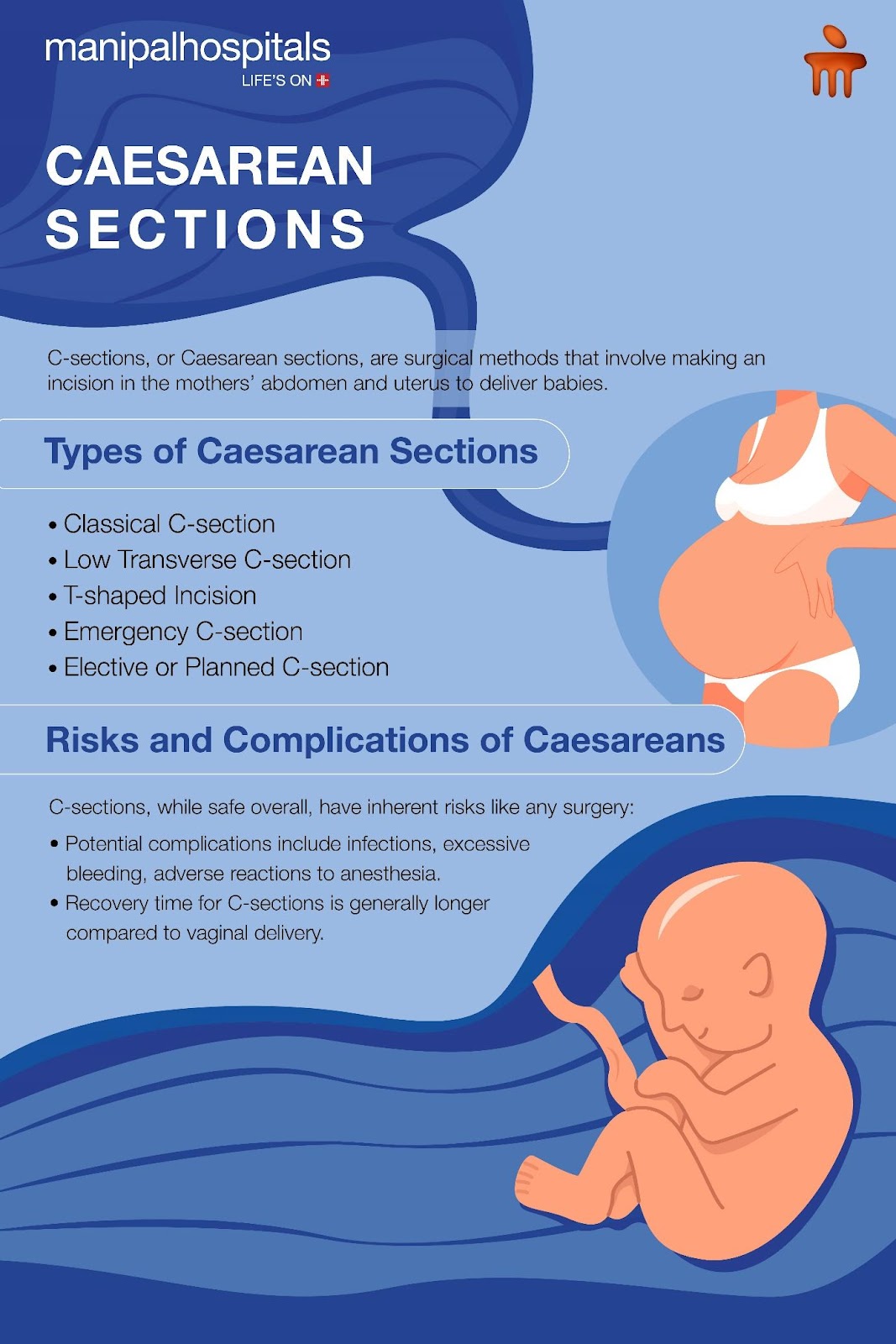
Becoming a parent marks an extraordinary chapter in life’s journey, brimming with anticipation and wonder. However, the path to parenthood doesn’t always follow the expected course. Medical complexities sometimes necessitate alternative routes, leading to Caesarean sections (C-sections). In India, the prevalence of C-sections has notably increased, with approximately 17.2% of deliveries being surgical. Exploring the realm of childbirth and understanding the intricacies and types of cesarean section becomes pivotal, offering insight into a medical procedure that, while not initially anticipated, can become a crucial pathway to a safe delivery.
Synopsis
Understanding Caesarean Sections
A Caesarean section, colloquially known as a C-section, is a surgical method where the baby is delivered through an incision made in the mother's abdomen and uterus. Although the preferred mode of childbirth is often a natural, vaginal delivery, certain medical complications or unforeseen circumstances can prompt the necessity for a C-section. For expecting parents, comprehending the nuances of C-sections becomes vital, as these variations can significantly impact recovery and future pregnancies.
Types of Caesarean Sections
1. Classical C-section
This procedure entails a vertical incision made on the upper part of the uterus. However, due to an increased risk of complications such as uterine rupture in future pregnancies, this method is rarely performed today.
2. Low Transverse C-section
Commonly referred to as a lower-segment C-section, this method is the most prevalent. An incision is made horizontally across the lower part of the uterus, usually along the bikini line. This approach is associated with quicker recovery and a reduced risk of uterine rupture in subsequent pregnancies compared to the classical method.
3. T-shaped Incision
In cases requiring a larger opening to safely deliver the baby, a T-shaped incision—both vertical and horizontal—may be employed. Although less common, this method is typically used in complex situations.

4. Emergency C-section
Executed when complications arise during labour, endangering the health of the mother or baby, this type's specific incision depends on the urgency and prevailing circumstances.
5. Elective or Planned C-section
Scheduled before the onset of labour, this type is often recommended for specific medical reasons or when vaginal delivery poses risks to the mother or baby.
Risks and Complications of Caesarean Sections
While C-sections are generally safe, akin to any surgical procedure, they carry inherent risks and potential complications in almost all C-section stitch types. These may encompass infections, excessive bleeding, adverse reactions to anaesthesia, and a prolonged recovery period compared to vaginal delivery. Grasping these potential risks aids in informed decision-making by healthcare providers and expectant mothers alike.
Recovery from C-Section
Recovery post-C-section is variable and influenced by individual factors such as overall health, age, and pre-existing conditions. Mothers who undergo C-sections are advised to adhere to postoperative care instructions provided by healthcare professionals, encompassing proper wound care, pain management, and a gradual return to regular activities.
Concluding our expedition into Caesarean sections, it's vital to recap the diverse types discussed. Informed decision-making and open communication between healthcare providers and expectant mothers form the bedrock of a positive birthing experience. Given the uniqueness of each situation, consulting medical professionals is paramount. Manipal Hospitals, Kolkata, stands as a beacon of expertise and empathy, catering to childbirth-related queries. Let's champion further research and inclusive discussions about birthing options, fostering an environment where every parent can embark on their parenthood journey armed with confidence and knowledge.
FAQ's
An emergency C-section becomes necessary when unexpected complications arise during labour that pose a threat to the health of either the mother or the baby. It's a swift response to critical medical concerns that need immediate attention.
While elective C-sections are feasible, healthcare providers typically recommend them when there are valid medical justifications. It's crucial to discuss the potential risks and benefits thoroughly with your healthcare team before deciding on the cesarean types.
A scheduled C-section is a predetermined surgical delivery often advised for specific medical conditions or complications. Unlike emergency procedures, types of cesarean section allow for careful preparation and aren't conducted in response to an urgent situation.
Yes, in many cases, skin-to-skin contact and breastfeeding are feasible after a C-section. Your healthcare team will strive to facilitate these bonding experiences, even in the operating room or recovery area.
VBAC can be a possibility for some women who have previously had a C-section. However, its feasibility depends on various factors, including the reasons behind the previous C-section and the current conditions of the pregnancy. Consulting with your healthcare provider is crucial to determine if VBAC is a safe choice for you.



















 3 Min Read
3 Min Read


















